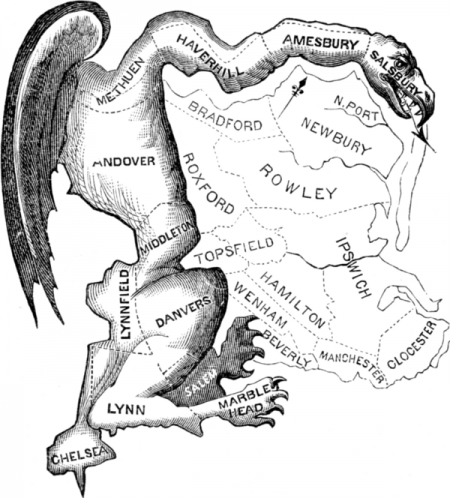
BY: JOSEPH KRASSNER
Staff Writer
Election rigging has been a subject of major debate throughout the United State’s presidential election. Ranging from claims that a rigged system allowed Hillary Clinton to win the democratic primary to theories that electronic voting machines can manipulate people’s responses, it seems that anyone that followed the presidential election could not relent the possibility of election rigging. In truth, this election was rigged, but not because of the obvious.
All too often, people interpret a rigged election simply in terms of alleged illegal activity such as voter impersonation or vote-buying. While this type of activity should be taken into account, according to the 2012 News21 analysis, since 2000, there have been 2068 alleged cases of election fraud. Even if in every one of these cases the alleged suspects voted twice, these numbers are insignificant as they would account for less than 1% of the popular vote margin between Clinton and Trump. There is also difficulty in verifying many of these alleged cases as past studies conducted on analysing voter participation consist of major errors. In 2015, the Cooperative Congressional Election Study led by Stephen Ansolabehere interviewed a group of participants from a previous survey conducted in 2014 about the demographics of the voting population and found that the same people often changed their identifications about whether or not they were a citizen or non-citizens. As a result, Stephen Ansolabehere had suggested in the publishing of his critique, that there was misclassification in the previous 2014 study.
If one thing is certain, it is that we cannot specifically analyze the voter fraud among the popular vote. Voter fraud has been a tangent issue throughout most global elections and because of the United States’s quest to try and create a perfect democracy, people have constantly attempted to find solutions to such a complex problem. If we are trying to strive towards a more perfect democracy, we should acknowledge that the congressional districts that fill the House of Representatives have made this election undemocratic.
For the past six years, Republicans have maintained a majority in the House of Representatives and maintaining this majority will enable them to enjoy the luxury of another two years as. This majority, however, was only obtained through the use of gerrymandering, the manipulation of the boundaries of election districts to provide an advantage towards one party. Gerrymandering does not occur often. After every U.S census, 10 years, state legislators (or for some states independent bodies) have the opportunity to redraw these boundaries in order to account for a moving population. Instead of accounting for just one similar demographic, gerrymandering has allowed the Republican party to maintain a clear advantage in states that might otherwise have a high democratic population.
The situation involving the 12th Congressional District of North Carolina is a good example of the damaging effects of gerrymandering. According to Ballotpedia, almost 70% of the population voted Democratic, electing a Democratic Representative in the House. The boundaries of the District are odd, since it is a relatively small area along Interstate 85, which spreads into many major cities in North Carolina. By purposefully manipulating the boundaries of the 12th district, Republican Representatives in the State of North Carolina were able to confine a predominantly Black and Hispanic community into just one crowded congressional district. This has allowed Republicans to create more safe-hold congressional districts at the expense of the potential democratic districts.
North Carolina is far from being the only state with severe cases of gerrymandering. These congressional districts include Illinois’s 4th Congressional District which includes an overwhelming and significant amount of Hispanics in and around the Chicago area, and Florida’s 5th Congressional District which voted almost 65% Democratic. While these numbers are surprising, they can have detrimental consequences during elections. The people that congressional districts elect to serve in the Senate and the House are people who can influence members of the electoral college and therefore can change who is president. While Hillary Clinton may have barely won the popular vote, Donald Trump received an overwhelming victory in the electoral college thanks in part to a significant Republican presence in both state and federal government.
Whether you are disappointed or happy about the result of the election, one thing is clear: the results of the election were no accident. Donald Trump was not magically elected president and while many can claim that the media unfairly portrayed Trump, it is clear that media focused on agreeing or combating Trump’s extravagant claims about whether or not the election was rigged. A survey conducted by the Politico during October concluded that around 41% of voters, mostly Republican, believe that the election could been manipulated due to voter fraud. Those 41% are right, but for the wrong reasons. It is true that this election is rigged, but it is not because of individual voters among the popular vote, but instead, the way our congressional districts are drawn. Unless more attention is directed to this issue, we might experience a greater divide between what people think and how they are represented.














